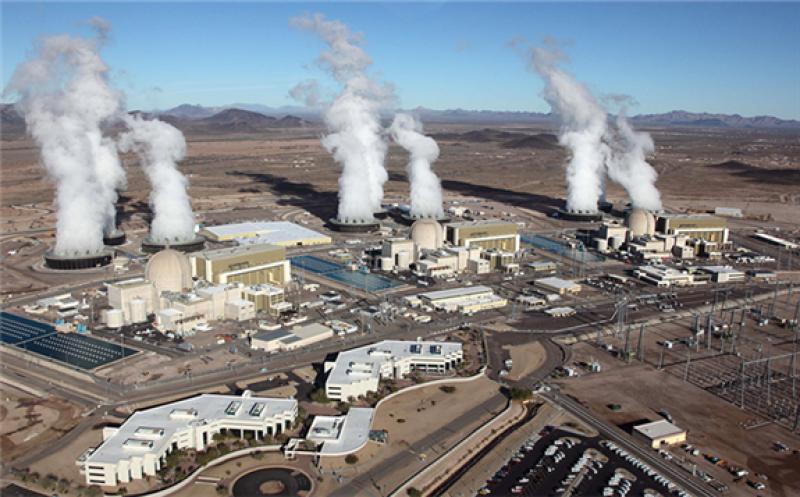All but four of the nation’s 94 operating nuclear power plants are performing at the highest safety and security levels, according to a new release from the U.S. industry regulator.

The Nuclear Regulatory Commissions has sent out letters to each of the power plants and its operating utilities, indicating their marks under the NRC’s inspection regimen. The baseline program include thousands of hours of inspection for each of the nuclear reactor units.
“Ninety reactors reached the highest performance category and fully met our safety and security performance objectives,” said Acting Director of the NRC’s Office of Nuclear Reactor Regulation Andrea Veil. “Those 90 units will receive thousands of hours of inspection under our ‘baseline’ inspection program.”
Among the biggest U.S. nuclear powered generators are Palo Verde (pictured above), Browns Ferry, South Texas, Susquehanna, Oconee, Braidwood, Byron, Watts Bar (pictured at right) and Sequoyah. All of these rated in the top performance category for the NRC inspections, judged on factors including reactor safety, barrier integrity, occupational radiation safety, coolant system activity and more.
Three reactors were in the second performance category, needing to resolve one or two items of low safety significance. Plants in this category are Callaway (Missouri); Clinton (Illinois); and Surry 2 (Virginia).
For this performance level, regulatory oversight includes additional inspection and follow-up of corrective actions.
The Grand Gulf reactor in Mississippi was in the third performance category with a degraded, and still acceptably safe, level of performance. For this category, regulatory oversight includes more NRC inspections, senior management attention, and oversight focused on the cause(s) of the degraded performance. There were no reactors in the fourth performance category.
The 94 U.S. nuclear plants generated close to 20 percent of the nation’s electricity and more than half of its carbon-free electric power. Only one new reactor unit, the Tennessee Valley Authority’s Watts Bar 2, has gone online in the past three decades (2016). Georgia Power is currently leading completion of the Vogtle Units 3 and 4 project in Georgia, due for commercial operation later this year and 2022, respectively.
Nuclear power, despite its reliably baseload, capacity and carbon-free attributes, is struggling to complete economically with newly installed combined cycle gas turbine (CCGT) and renewable energy power plants. Numerous reactors have been shut down in the recent years, and more than 5 GW of nuclear capacity is planned to be retired this year, according to reports.